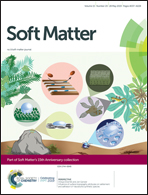Miniaturised acoustofluidic tactile haptic actuator
Abstract
Tactile haptic feedback is an important consideration in the design of advanced human–machine interfaces, particularly in an age of increasing reliance on automation and artificial intelligence. In this work, we show that the typical nanometer-order surface displacement amplitudes of piezoelectric transducers—which are too small to be detectable by the human touch, and constitute a significant constraint in their use for tactile haptic surface actuation—can be circumvented by coupling the vibration into a liquid to drive the deflection of a thermoplastic membrane. In particular, transmission of the sound energy from the standing wave vibration generated along a piezoelectric transducer into a microfluidic chamber atop which the membrane is attached is observed to amplify the mechanical vibration signalling through both the acoustic radiation pressure and the viscous normal stress acting on the membrane—the latter arising due to the acoustic streaming generated as the sound wave propagates through the liquid—to produce 100 μm-order static deflections of the membrane, upon which approximately 0.5 μm dynamic vibrations at frequencies around 1 kHz are superimposed; both these static and dynamic responses are within the perception range for human finger sensation. The large static deformation, the relatively fast response time, and the ability to incorporate a dynamic vibrotactile response together with the small size and potential for integration of the device into large scale arrays make this mechanism well suited for driving actuation in devices which require tactile haptic responses.



 Please wait while we load your content...
Please wait while we load your content...